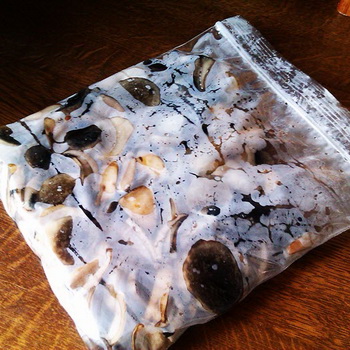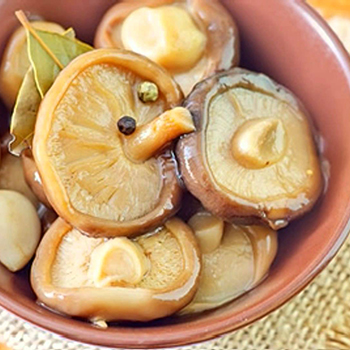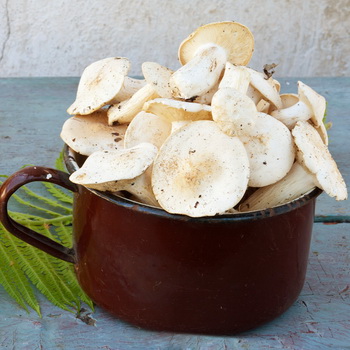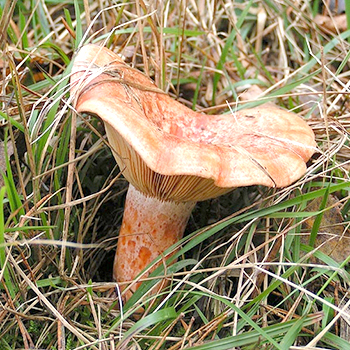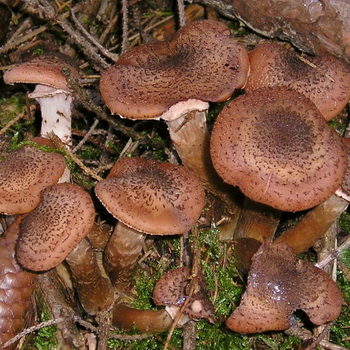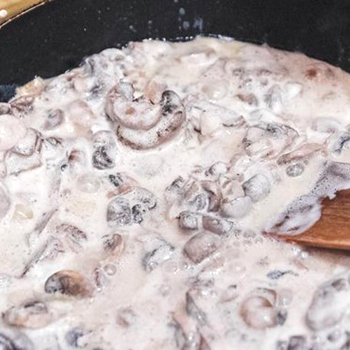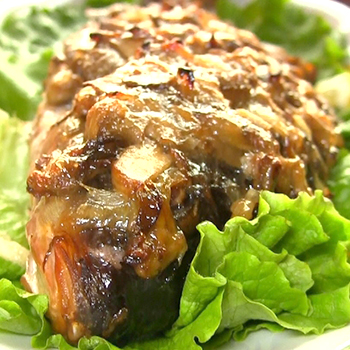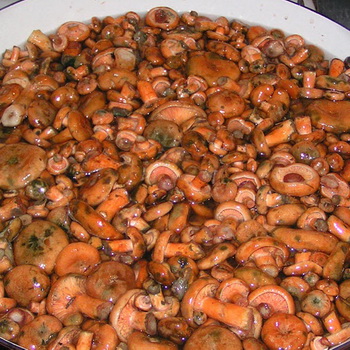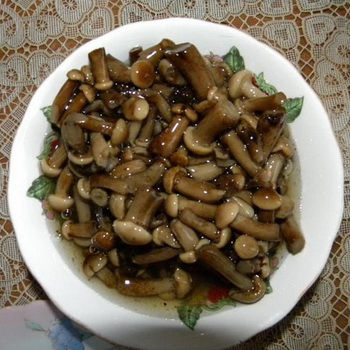Where to look for mushrooms in the forest: video - where they grow in the forest
 We offer advice to mushroom pickers on where to look for milk mushrooms and where they are most likely to grow. Their fruiting period begins at the beginning of summer and lasts until the establishment of snow cover.
We offer advice to mushroom pickers on where to look for milk mushrooms and where they are most likely to grow. Their fruiting period begins at the beginning of summer and lasts until the establishment of snow cover.
Therefore, if you know where to look for milk mushrooms in the forest, you can always return home with a large harvest. Due to the fact that they form large groups during fruiting, it is enough to find several places for them to fill the basket. Read the article on where to look for milk mushrooms, apply the tips in practice and enjoy the "quiet hunt".
Where is it better to look for milk mushrooms


Knowing where milk mushrooms grow and how to look for them will help you always return from the forest with a full basket. An experienced mushroom picker differs from an inexperienced one in that he never returns from the forest with an empty basket, complaining that there were no mushrooms in the forest. He already knows that there are always mushrooms in the forest, you just need to know where to look for them. A seasoned mushroom picker always has several mushroom places in stock, where a rich harvest of white, chanterelle or boletus mushrooms awaits him. After all, an experienced hunter will not look for boletus boletus under an aspen, but boletus boletus in a pine forest. He knows for certain all the habits of forest dwellers, and first of all their geographic preferences and preferences.


 If you have already decided where it is better to look for milk mushrooms, then remember that these mushrooms grow well in damp but warm weather. That is why the best time to collect them is 2-3 days after a heavy rain. In order to plan your trips to the forest in advance, you need to closely monitor the weather and learn to predict its changes. To do this, you can use folk signs, keep records of observations yourself, including barometer readings in them.
If you have already decided where it is better to look for milk mushrooms, then remember that these mushrooms grow well in damp but warm weather. That is why the best time to collect them is 2-3 days after a heavy rain. In order to plan your trips to the forest in advance, you need to closely monitor the weather and learn to predict its changes. To do this, you can use folk signs, keep records of observations yourself, including barometer readings in them.
 In pine forests of middle and older age, various varieties of mushrooms appear in abundance. In autumn, in moderately humid, mossy places, you can find black pods.
In pine forests of middle and older age, various varieties of mushrooms appear in abundance. In autumn, in moderately humid, mossy places, you can find black pods.
Where to look for white milk mushrooms
 Let's figure out where to look for white milk mushrooms: for this you need an understanding of what growing conditions they prefer. A pine forest, even with a small admixture of other tree species, is much richer in the variety of mushrooms than a pure pine forest. If there is an admixture of aspen and oak in a pine forest, there is a load of white, aspen milk, oak milk, black milk and other types of milk. And the white milk mushroom rarely catches your eye, like his fellow black milk mushrooms - he is a resident of the coniferous litter, from which he does not want to stick his nose out. And rarely when he exposes a fleshy white barrel, he basically has to "catch" it along the unevenness of the "pine blanket".
Let's figure out where to look for white milk mushrooms: for this you need an understanding of what growing conditions they prefer. A pine forest, even with a small admixture of other tree species, is much richer in the variety of mushrooms than a pure pine forest. If there is an admixture of aspen and oak in a pine forest, there is a load of white, aspen milk, oak milk, black milk and other types of milk. And the white milk mushroom rarely catches your eye, like his fellow black milk mushrooms - he is a resident of the coniferous litter, from which he does not want to stick his nose out. And rarely when he exposes a fleshy white barrel, he basically has to "catch" it along the unevenness of the "pine blanket".

As soon as the experienced eye of the mushroom picker sees a slightly noticeable hill, it means that the search was crowned with success - a whole family of milk mushrooms is hiding there.
 And next - a matter of experience - there are always 15-20 more white fleshy aborigines - the main thing is that the baskets are enough. Looking for white milk mushrooms is a laborious task, only a professional mushroom picker can do it. Yes, and this mushroom has become extremely rare to grow, sometimes during the whole summer it is possible to find 2-3 specimens, and even then worn out by worms.
And next - a matter of experience - there are always 15-20 more white fleshy aborigines - the main thing is that the baskets are enough. Looking for white milk mushrooms is a laborious task, only a professional mushroom picker can do it. Yes, and this mushroom has become extremely rare to grow, sometimes during the whole summer it is possible to find 2-3 specimens, and even then worn out by worms.
Where to look for black milk mushrooms and other varieties
 There are other varieties of mushrooms, and where they grow is described below. In pure spruce forests, few varieties of mushrooms are found. In mature spruce forests, yellow mushrooms are found. It grows in small groups on mossy wet places in forest clearings, along streams and on the slopes of ravines.
There are other varieties of mushrooms, and where they grow is described below. In pure spruce forests, few varieties of mushrooms are found. In mature spruce forests, yellow mushrooms are found. It grows in small groups on mossy wet places in forest clearings, along streams and on the slopes of ravines.
 In spruce and spruce-fir forests, yellow milk mushrooms are found. Since August, black milk mushrooms can be collected in birch forests. The people called him nigella. This is a giant among other mushrooms - the cap can reach 20 cm in diameter.Its color is very dark, almost black - greenish-brown. People say: "It looks black, inside it is tasty." These are the main places where to look for black milk during the entire fruiting season of this crop.
In spruce and spruce-fir forests, yellow milk mushrooms are found. Since August, black milk mushrooms can be collected in birch forests. The people called him nigella. This is a giant among other mushrooms - the cap can reach 20 cm in diameter.Its color is very dark, almost black - greenish-brown. People say: "It looks black, inside it is tasty." These are the main places where to look for black milk during the entire fruiting season of this crop.
 Deciduous forests can consist of either one species of deciduous trees - birch groves, aspen forests, oak forests - or a mixture of species. Homogeneous deciduous forests are characterized by species of fungi that live in symbiosis with this tree species.
Deciduous forests can consist of either one species of deciduous trees - birch groves, aspen forests, oak forests - or a mixture of species. Homogeneous deciduous forests are characterized by species of fungi that live in symbiosis with this tree species.
Birch forests are rich in various mushrooms. In light and dry birch groves, white podload is often found, usually growing in groups, forming wide arcs - parts of huge "witch circles". Here you can also find other types of milk mushrooms.
 In oak trees, you can find oak mushrooms, as well as pepper mushrooms, which grow in large clusters even in very shaded places.
In oak trees, you can find oak mushrooms, as well as pepper mushrooms, which grow in large clusters even in very shaded places.
Pure aspen forests are usually poor in mushrooms, but they also have their own characteristic species, such as aspen and aspen mushrooms.
In mixed hardwood forests, many species of fungi grow. Small-leaved forests abound with boletus, various milkers, among which are real, yellow, black, blue, valui, violin and many other mushrooms.
 However, mixed deciduous-coniferous forests are especially rich in a variety of mushrooms. Depending on the composition of tree and shrub species, you can find any mushrooms that grow in symbiosis with them. For the composition of mushrooms, the main tree species, as well as the age, density and moisture of the forest, are primarily important. In damp forests with a predominance of birch and aspen, with an admixture of spruce, you can find black milk mushrooms and podgruzdki.
However, mixed deciduous-coniferous forests are especially rich in a variety of mushrooms. Depending on the composition of tree and shrub species, you can find any mushrooms that grow in symbiosis with them. For the composition of mushrooms, the main tree species, as well as the age, density and moisture of the forest, are primarily important. In damp forests with a predominance of birch and aspen, with an admixture of spruce, you can find black milk mushrooms and podgruzdki.
 For successful mushroom picking, you need to choose the right forest. In the dry season, for example, it will be better to go mushrooming in a humid forest, while in very wet seasons, on the contrary, it is better to prefer higher places. Old, dense, gloomy forests are usually poor in mushrooms, both in composition and in quantity, and in a young birch forest, barely overgrown with a bush, there may be many different mushrooms. In forests with high, dense grass, there are usually few mushrooms, so you need to choose places so that there is little grass and the forest litter can be seen through it.
For successful mushroom picking, you need to choose the right forest. In the dry season, for example, it will be better to go mushrooming in a humid forest, while in very wet seasons, on the contrary, it is better to prefer higher places. Old, dense, gloomy forests are usually poor in mushrooms, both in composition and in quantity, and in a young birch forest, barely overgrown with a bush, there may be many different mushrooms. In forests with high, dense grass, there are usually few mushrooms, so you need to choose places so that there is little grass and the forest litter can be seen through it.
A novice mushroom picker should remember that most mushrooms prefer forest edges, glades, sparse places warmed by the sun, and only very few mushrooms, such as milk mushrooms or oak trees, climb into the thicket and on the slopes of ravines. An inexperienced mushroom picker can pick up a basket of a wide variety of mushrooms without going far into the forest, but you need to know them well in order to be in the right place at the right time and get out of the forest with a basket full of porcini mushrooms, camelina or milk mushrooms.
Look carefully where to look for milk mushrooms in the video, where all the secrets of experienced mushroom pickers are told.

